AN 1863 CRUISE ON LAKE ONTARIO
* Extract from a talk by Archibald Lamont delivered to the meeting of the Cobourg & District Historical Society October 1995
* Sources at end
Good evening, Ladies and Gentlemen.
You have a playground at your front door and this talk is about a great adventure on and around it long ago. Sailing about on Lake Ontario for pleasure and fun undoubtedly was a sport soon after the arrival here of people of European ancestry and possibly much earlier than that. There is one record dating from 1801, though C.H.J Snider tells us that "the first private yacht mentioned on Lake Ontario "... was offered for sale in 1832." Since those early days, there have been many thousands of cruises throughout the Lake, but very few stories exist describing their details. On August 3 of the year 1863, the Yacht BREEZE set out from the Royal Canadian Yacht Club on a cruise that resulted in a diary full of delightful detail. It is the purpose of this paper to pass on some of that delight to you. The diary today is in the National Archives of Canada, a gift to the Nation from George and Arthur Beddington, great nephews of the diarist.
BREEZE ARRIVES AT COBOURG
I'm going to start with an excerpt from the diary dealing with the arrival of the Yacht BREEZE at Cobourg on August 4 of 1863. Cobourg and some of its citizens figure prominently in the diary, many people being mentioned by name. Here is the arrival:
"At 8h a.m. we ran between Cobourg piers and met the RIVET'S dinghy taking her crew out to bathe. We were still at breakfast <but> two or three of us went on deck to get the anchor ready just as we entered the inner harbour, but were too late. Burrell, not knowing the way the boat carried with her, luffed up too sharp, a puff of wind struck us just before, and so we ran straight into the wharf. Luckily, our bowsprit head was higher than the wharf so the bobstay lifted us. Loafers on the wharf shoved it off, and we anchored all right between RIVET and PALMETTO. The boats in harbour were the PALMETTO and ZOUAVE of Hamilton, the BREEZE, RIVET and DART of Toronto, the ARROW, GORILLA, WIDEAWAKE, KITTEN and JOHN A. MACDONALD of Cobourg."
"After a pipe, I attired myself and went into town to call on the inhabitants. Did the Barrons, Chattertons and MacPhersons, the proverbial Cobourg hospitality flourishing like a green bay tree. The others loafed about town. All assembled at noon for tiffen except Morrison, Hancock, and Duggan. Mr. Barron and Mr. Street visited us."
"Delicious as ever, in the afternoon many of the Cobourg girls assembled on board the RIVET. I joined the crew and we had a jolly sail; put down two buoys to mark the course. We had twenty four on board all told, not bad for a 16 ton boat. There was plenty of wind and little sea, so everyone enjoyed it immensely. We got in again at half past six, and I rowed myself on board the BREEZE just in time to join the rest at dinner. Just as we finished dinner, the Cobourg Band came down and getting on board the JOHN A. sailed about the harbour playing melodiously the while. All Cobourg turned out to stroll on the pier and enjoy the cool evening breeze. It was very free and easy and also very charming."
"(Just after midnight, we) returned from the hut of one Crusoe - no relation to Robinson - a "big bug" or sachem in these parts. To the sea rovers gave he a nautch, likewise beer. Many of the younger and fairer natives were present in their ordinary costume, reserving the full effort of their most gorgeous apparel for the ensuing night. Tattooing does not prevail along this coast. The religion is unknown and it matters not, but I have been credibly informed by some of the more ancient and unmarried females that their fair juniors are much given to the worship of a mysterious deity called theossifer."
In this short piece, we have learned some various things -what the Cobourg establishment did for entertainment, who some of that establishment were, what boats were in the harbour, how the BREEZE came to town, what our diarist thought of the Cobourg girls, and so on. 'The Crusoe" mentioned was one of the local establishments, his "hut" was a big house, a "nautch" is an entertainment, and "theossifer" is "the officer". The diarist was engaged in arch humour in the whole of the paragraph.
BREEZE came to town because the people on board her were on a holiday cruise, and because Cobourg's fourth annual sailing regatta was taking place. They had four happy days ahead of them, but before I tell you of those days, I should tell you about the actors.
BAINES THE DIARIST AND HIS FELLOW OFFICERS
Our diarist was Henry E. Baines, 23 years of age, Lieutenant in the Royal Artillery, stationed at Fort York. Baines was at Fort York because of the reinforcement of that fort brought about by warlike threats against Canada issuing from the United States. I mentioned above that he belonged to an institution that regarded the Americans with some contempt, a view that derived from the fact that officers in the Royal Artillery considered themselves to be the elite of the elite, and thus superior to all other mortals. Besides, the Americans were the potential enemy. Baines was an experienced yachtsman, with his own small sailboat, and crewed in the Yacht DART for a summer cruise around the Lake in 1862. Like all Royal Artillery officers of the time, Baines had an intensive education in observations, in writing, and in illustration. All of these abilities were brought to bear in his preparation of the diary, as you will see. Baines incorporated into his diary many watercolour and other sketches and an unmistakeable joie de vivre and readiness to take life as it comes, as shown by his reaction to the events of the Regatta Ball. Three years after his wonderful cruise, he lost his life in line of duty at the big fire in Quebec City, dying a hero to the whole populace of that city.
Baines was on leave from his duties for one month while he enjoyed the cruise of the Yacht BREEZE on Lake Ontario. With him for the whole duration of the cruise were two other officers at the Royal Artillery, Lieutenants Woodfull and Harvey, and a law student, Fred Duggan. All were under 25 years of age. In addition to these, for the leg from Toronto to Cobourg, they had aboard four other military officers, who, with the owner and others, I will tell you about, made a total of twelve people!
Reading about that crew of young men on holiday so long ago is delight. Youthful spirits burst forth from the page, as they plunged into the cold water first thing in the morning to "bathe" or at other times, enjoy the company of young women. They made their way around the lake, signing, fishing, observing, bathing, enjoying the company of women at times, dealing with difficulties. Many have followed, but I doubt that any have enjoyed themselves more. The diary records that "none of us were possessed of any particular nautical skills, but we pulled well together, and took things as they came." In other writings, I have referred to the crew of the BREEZE as "The Happy Warriors". And so they were.
Of them all, we have but one specific picture, sketched by Baines. One morning, "Harvey got into the dinghy with a towel and a big sponge and, having disrobed, indulged in a regular sponge bath. He looked so pretty that we cast off the painter and set him adrift in order to have a good view from a distance. He looked like a mermaid, only rather more so."
THE YACHT BREEZE
For the cruise in 1863, Baines' boat was the Yacht BREEZE and his skipper Dr. Edward M. Hodder.
The Yacht BREEZE, was a wooden boat of 17 tons, cutter-rigged and deep-draught. She had no radio, no record player, no engine - no such things even existed. When the wind fell to nothing, she could only stay and wait where she was until more came along. Of the cabin arrangement, Baines says little, except that "To each man was assigned a resting place. The Commodore had the aftermost berth on the starboard side, I the one forward on the same side, Woodfull opposite the Commodore, and Duggan the one forward on the port. Mellor turned in with the Commodore, and Harvey spread a mattress between the berths on the floor. His were the most comfortable diggings of all, as, no matter which tack we were on there was no chance of his falling out of bed... As our uniform cases reposed in the cockpit, we were forced to adopt some dodge to enable us to have an accessible depot for tobacco, pipes, clothing and small deer generally below. Our plan was to raise the mattress and insinuate our stores beneath it so as to make a pillow. It was a crafty move, but from it came great grief to me hereafter."
BREEZE was built in Toronto in 1862 for Dr. Hodder, who had great hopes for her on the racing circuit. However, despite that she was reported in the newspapers as "very carefully built with the latest improvements faithfully carried out in model and rig... she had not fulfilled the expectations formed of her by her builder and owner. In time, as her points are better understood, she may exhibit an improvement." In fact, she didn't. Dr. Hodder
abandoned BREEZE to another owner in 1868, and acquired a bigger vessel. BREEZE at some later time unknown to me, was "lost off the mouth of the Humber River," according to Snider.
COMMODORE HODDER, SKIPPER/OWNER OF BREEZE
Early in the diary, describing the preparations for departure, the diarist describes "all hands acting as stevedores and the Commodore working and superintending like two." Other than this comment, and a sketch, he says nothing about his skipper. That is a pity, for there is a great deal to be said about the man. A sketch in the diary shows him during a stop at Presqu'ile, somewhat heavy, grey-bearded, his crew surrounding him, and his boat lying at anchor. Dr. Hodder was a big man not only physically, but also mentally and in the management of boats.
At the age of eleven years in 1822, Hodder went to sea as a Midshipman in the Royal Navy, serving with his father, Captain Hodder, R.N. His service in the RN. was cut short by a wish to study medicine. By the time of his death, his name "was a household word in Toronto. Skillful, cautious, affable, and handsome, he was a universal favourite." And no wonder, for the good Dr. Hodder was indefatigable. A practicing physician, he was also Coroner of Toronto, president of various medical bodies, a leading member of the active staff of two hospitals, a co-founder of a medical school, and dean for some years of another.
With all his professional engagement, though, Dr. Hodder still found time to indulge his love of the maritime life, and indulged it whole-heartedly until his death in 1878. Longer than any other, he was Commodore of the Royal Canadian Yacht Club for a total of over twenty years; from 1856 to 1878, there were few years in which he was not the lead man in that club.
He never forgot his early experience in the Royal Navy and was obviously a careful and competent captain of his vessel. When BREEZE approached Weller's Bay (Consecon Bay) in 1863, we can be sure there were no good charts showing this area in detail at the time. Even had there been charts, they would no doubt have been unreliable, for that shore is a lee shore and there are shifting beds of sand on it. Never mind. The Commodore knew exactly what to do, "... having anchored and lowered head-sails, the Commodore and Burrell took the dinghy and lead line and proceeded to examine (the) opening. Soon returning, they reported it practicable." Those were exactly the procedures used by the great maritime explorers in the days not long before Hodder's experience as a midshipman in the R.N. Commodore Hodder knew his business very well indeed, and used his knowledge to help others.
At the time of the diary, the chart of the lake in general use was one produced in 1850 by Lt. Frederick L. Herbert, R.N., and published in Toronto. It gave soundings in the lake at large, but told nothing of the harbours and ports frequented by mariners. The Commodore, evidently unhappy with the lack of information available as guidance to the harbours, produced a little book in 1855, entitled THE HARBOURS AND PORTS OF LAKE ONTARIO. On the cover of his book, he describes the contents as having arisen "from recent surveys and personal observations." His professional medical responsibilities show through his avocational interest when he writes in the preface to his book "it will gratify me, if through any effort of mine, a single life is saved, or the smallest craft that navigates this noble lake is preserved from wreck."
With the book, he was not finished. At the time of its publication, he says that he has himself "visited every Port, with the exception of the Sackets Harbor and Port Ontario." By 1866, he had visited all, with no exceptions, and published a chart of the Lake that included the harbours for the 'first time. Baines doesn't say much about the activities of The Commodore on the 1863 cruise of BREEZE. It seems likely that he was off sounding the harbours in which they found themselves, checking previous information he had developed and finding new things, all with the 1866 chart in mind.
"SHIP'S STAFF" OF THE YACHT BREEZE
To assist him in the running of his vessel, Hodder employed a professional seaman, the pilot, "Burrell, a strong weather-beaten fellow." Says the diarist of him "This latter was a good type of the better class of Lake hands. During the summer season, he sails in one of the large schooners that carry freights or corn grain or lumber from one lake port to another and occasionally ventures on a coasting voyage to Halifax or St. John. His wages might be $35 or $40 per month. In the winter when the navigation of the Lakes is rendered impossible by the cold, he betakes himself northward to the unsettled districts and traps the smaller wild animals for the sake of their skins. With tea and tobacco, he said, he could rough it anywhere, and I believe him. These Canadian sailors have a good deal of the American versatility in their composition. He was a most useful fellow on board, knowing nearly every harbour on the Lake thoroughly, and being a good seaman, though he was not accustomed to small craft. This made him distrust the ship and hesitate about carrying on a good deal at first, but latterly he gained confidence enough and made the most of her."
With two such men as Hodder and Burrell running BREEZE, it really is surprising to learn that, in the course of a three week cruise, they managed to lose two dinghies to bad weather. But they did indeed.
For cabin duties, BREEZE sailed with a Private Miles aboard, but at Cobourg Miles was discharged for unstated reasons, and another "boy answering to the name of Alfred was shipped and instructed to make himself generally useful. A cadaverous loutish looking fellow, requiring constant stirring up, he saved us a deal of dirty work in the cleaning and cooking departments".
Finally, the ship's staff included Mellor, the Commodore's young son.
I
THE STAY IN COBOURG
As we have heard, BREEZE arrived in Cobourg on August 4. Figuring prominently there in the shore-side activities of the next few days was the Globe Hotel, on the northeast corner of King and McGill streets. Built in 1848, it was touted as the "finest hotel between Toronto and Montreal, "a description somewhat at odds with Baines' description of the ballroom. Its reputed grandeur did not save it, for it burned the year following Baines' visit.
From the diary, here is the whole of Chapter 3 describing part of the stay in Cobourg:
"Awoke at six on the 5th, with many flies buzzing and biting. The morning bright and warm, no wind, bathed off the pier head. Oh, how warm that water was! Then clear up ship and breakfast at 8 a.m., pie, rolls, ham, beef, tea, coffee, all well punished. Then a pipe. The second-class yachts, i.e., those under ten tons, started at 10 a.m. - SLUG, just brought from Rice Lake on the cars, WIDEAWAKE, ZOUAVE, PALMETTO and KITTEN. We then took eight ladies on board, drifted out a little way, then a long rolling swell off the Lake and no wind - so hot! We got in as soon as we could and saw the first class yachts start at 1 p.m. The start was effected in this way. All the competing boats were moored on the lee of the windward pier with their mainsails up in order previously determined by lot. At a given signal their headsails were hoisted and they were towed out by the bystanders.
They got off well but the GORILLA being first had the advantage of a little puff of wind and gained a good start on the others, maintaining her lead until the end of the day. The others were the ARROW, JOHN A. MACDONALD, RIVET and DART. There was a light wind from the South. All day the race lasted, the wind at times falling altogether, then exerting itself enough to give a feeble puff for a few minutes, after which it became calm as before. It freshened, however, enough to bring the GORILLA in before the time allotted for the race had elapsed, but died away immediately, leaving the RIVET just outside. Had the breeze lasted ten minutes longer, the RIVET would have saved her time and won the race. The WIDEAWAKE carried off the second class prize."
"The band played on board the JOHN A. as before and we loafed with many ladies on the wharf till they all took themselves off to dress for the ball. Mrs. Stewart, the Misses Hodders, and Miss Coewell arrived by steamer from Toronto and were forthwith conducted to the Globe. Harvey had taken a room there and I dressed in that. I had to go down to the bar to procure a ticket. It was crowded with loafers more or less drunk, smoking, chewing, and spitting like Yankees."
"The ball room was dismal, insufficiently lighted, and papered with dark green and brown; it look like a cavern. The music was bad, the floor was bad and the supper was bad. The girls were good though and that covered nearly all the sins. I was bored into leaving at two. I stood at the door of the hotel talking for a few minutes when I noticed two gentlemen coming down stairs in each others arms and head foremost. About half way down the undermost hitched his leg in the bannisters and remained in suspense, while the other shooting ahead picked himself up and walked away. Imaging this to be a custom of the country, I remained quiescent and observant. Presently some bystanders disengaged the obfuscated and entangled gentleman and took him into the bar, whence he speedily emerged followed by a fist. This time he fell soft on a group of loafers who scattered in confusion. Much noise and talking but nothing practical ensued so I went home to bed. This was not the only row that night."
"6th August. Could not manage to get up as early as usual this morning. I had, however, my accustomed tumble in off the pier head, and performed my toilette satisfactorily. I was fortunate enough to possess a small bag in two compartments originally intended for shaving tackle but now made to carry brushes and soap. This I slung to a towel and always took with me when I went to bathe. I scrubbed my hands and cleaned my teeth while swimming in the lake and brushing my hair was an agreeable pastime on the road back. When bathing off the yacht we used a tin basin turn and turn about for any soapy ablutions. One small mirror was provided by the commodore and it always turned up providentially on our nearing any port with a town attached to it. Elsewhere it remained perdu as nobody ever looked for it. After bathing this morning, I went to a barbers, got myself shaved, and then joined our party at breakfast at the Globe. Then a pipe and a prowl into town.
About midday the ladies gathered to the ship and we ran out some seven miles to the southward to watch the race. It was a good sailing day with plenty of wind and unfortunately a proportionate amount of sea running. Several of the ladies yielded to the weakness of their dear little interiors but we never mention names. Mr. Lanon, Harvey, Woodfull and Dugmore, gathered around the weather shrouds and did vocal melody "an it were any nightingale". The unfortunate RIVET was becalmed between two other boats some few hundred yards on each side of her, both of whom had plenty of wind, so when at last a cat's paw came her way, she put about the returned to port. We soon did the same and disembarked our precious freight."
"Then the Toronto party all dined together at the Globe and spent a very pleasant evening at Judge Boswell's. Music and dancing, strolling on the lawn, and sitting on the steps, very sociable and jolly. About one a.m., we all strolled down to the pier to see Mrs. Parsons off to Toronto. The boat from Kingston came in at two looking very pretty with her long row of cabin lights and coloured lamps on each paddle box. Farewells over, I turned in aboard the BREEZE."
"7th August. Matutinal swim, breakfast at the Globe. The Breezers and ladies from Toronto assembled at Judge Boswell's at eleven. Traps and quadrupeds were collected and we started for Rice Lake. Arthur Boswell, Bogert and I took the last thing on wheels and disappeared. It was a kind of gig drawn by the spectre of a horse who appeared ready to go on his knees every day and beg that twenty four hours more life might be vouchsafed to him. We came up to some others of the party at a public house (or tavern) about halfway, called Cold Springs. To them we accounted for having brought our beast so far by saying that he luckily fell to pieces near where another of the same class was grazing, so we mended him up with odd bits from this other. The road was pretty and changing its character constantly, now winding along the foot of a hill, now through deep woods, then emerging into open cultivated country with farmhouses scattered about. There was interest enough to carry us through the twelve miles without our feeling bored.
It was a blessed hot day, threatening rain now and then but the sun always prevented the clouds carrying out their intention. When we arrived at Gore's Landing we found all assembled in the hotel planning boating expeditions. The greater part of us got on board a small yacht and stood out into the lake. There was a light breeze just rippling the deep blue water. Some thirty miles in length, the lake only averages a breadth of three. It is fed by three good sized streams, the largest of which, the Otonabee, falls into it nearly opposite Gore's Landing. The Trent, its great effluent, runs out of the East end into the Bay of Quinte at Trentport.
But the chief beauty of the lake is its islands. I do not know how many there are but they are all very lovely, covered with trees to the water's edge, they show every variety of tint and colour in their foliage, and stand out well from the more distant wooded capes or tawny meadows on the Northern shore. The peculiarity of this lake to English eyes is the wild rice which grows in the deep water and lifts up its pale green feathery head in thick profusion through beds a mile and more in length. Round the islets and across the rice beds we cruised till the wind fell and left us fairly becalmed in a rice bed on our way home. A friendly tow brought us to our mooring and we prepared for dinner noways loth. Three of the party had been fishing and had caught some fine black bass, two of which weighed about 4 lb. each. The first dish at the dinner table was Maskinonge, the king fish of these lakes. It is more like a gigantic pike than any other English fish. This dish received due attention but did not at all interfere with the rights of those which followed it. The beer was good and plentiful and all things went happily. Then pipes and I made a rough sketch of the lake from the hill by the hotel."
"By this time shawls were being brought out and the horses were put to. Fred Duggan was offered to us in exchange for Bogert who was wanted to make up a quartette in another carriage. We examined the amount of sitting down room required by each of us (three in a gig, you see) and consented. Our dilapidated ground plan of a horse soon fell in rear of the others though we started him with a spurt and by the time we got to Cold Springs it was dark and raining."
"Damper and darker it grew till we could no longer say whether we were on the road or not but had to give the perfidious old beast his way. He, being probably incited thereto by the fresh smell of a hedge or rather creepers over a snake fence, for hedges are not in this country, meandered along till suddenly one wheel went down, the other up, and we found ourselves in a heap on the ground. Having taken a wrong turn on entering Cobourg, it was eleven o'clock before we reached Judge Boswell's. What a lot of tea we continued to drink when we had been wrung out and hung up to dry. At last we were forced to cry hold and I returned to the yacht. On my way down, I looked into the Macpherson's where dancing and generally jollity were going on. Wet, dirty, and tired, I presented myself in the ballroom and the very fact of the large patch of mud on my quarter which I thought the worst part of the business proved my excuse, for an upset story accompanied by such stern evidence covered all my sins, lateness and disreputable dishclout appearance into the bargain."
"It is perfectly marvellous how things that under ordinary circumstances you would never dream of getting into accommodate themselves to all one's personal peculiarities when on a cruise."
"Judge Boswell's coat fitted me a merveille at tea and I was equally at home in one of Jim Macpherson's at the party. After a while, I found myself too limp and tired to be up to the mark so obtained permission to depart. The yacht was some three or four yards from the wharf so I went to the hotel and had a pipe. Then the ladies had to be put on board the steamer for Toronto. It was blowing and there was a pretty heavy sea running out in the lake. Consequently, it was three in the morning when the steamer touched the wharf. No berths could be had but Clarkson and Cobden went off with the ladies and we trusted to them to manage. Just had time to run ashore before the gangway was hauled aboard. Then back to the hotel, loitering a moment to watch the great lights of the steamer in the long slow heave over each wave till they grew less and less and then went behind the thick black veil of darkness and rain."
"8th August. As several of the visitors attracted to Cobourg by the double event of regatta and ball had departed, I easily obtained a bed at the hotel. Not being likely to enjoy one again for some time, I made the most of it, and breakfasted pretty late. It was dead calm. I went down to the harbour and had a pipe. Then Fred Duggan turned up and we watched the drooping flags and motionless clouds. Consulted Burrel but got no hope from anything. There was a wee wee steamer, about as big as an ordinary row-boat close to us. She had crossed the lake from Rochester, where we met again. A small house in which were two apartments was built in her by way of cabin. Aft was the engine and forward two bunks. In the bow a regular flagstaff with the Stars and Stripes floating from it. If four fellows had taken her flag, one at each corner, they could have wrapped the boat in it and carried her off bodily."
"At last we got tired of watching her manoeuvre and concluded to search for the commodore; ran him to earth at Judge Boswell's. We agreed not to go out because there was no wind to take us out, and went through the town in search of tin-ware, fishing tackle, etc., etc. Having bought all we could buy, we marched through the streets carrying kettles and pans in regular procession to the ship. We dined on board at six. By the time our pipes were out, Bogert came down attended by ladies. Then the steamer from Toronto arrived; Bogert was put on board and somehow or other we all found ourselves in sailor costume spending the evening in the Judge's drawing room. That night everyone slept on board".
"9th August. At half past six, we shook ourselves out of our blankets and proceeded to tub. Woodfull and I took the dinghy to the west pier and had a bracing swim in the clear cold water. While we were dressing and doing toilette, a man having the appearance of a half drunk cobbler arrived accompanied by two small boys. He was very loquacious and inveighed against the uncleanly habits of the Cobourg populace who preferred a basin in their own rooms now and then to a daily swim in the big lake. His own lavatory tendencies he explained by saying he had been a soldier and then gave us many curious and interesting details of the bathing parades at Gibraltar. Furthermore, he informed us that every English soldier was obliged to learn to swim, and that now regular skating parades for the troops were held in Canada during the winter. We were hungry, and preferred breakfast to acquiring more knowledge so wished him good morning and returned to the ship. After breakfast, we warped out of the harbour under sail. The wind was light but steady from the Southwest. Goodbye to Cobourg."
The Cobourg Sentinel of 1863 reported "Mr. Wallace was the first of our citizens who risked capital in yachting, and to him we are especially indebted for the many pleasant days we enjoyed during the past few years. We congratulate our townspeople on this late addition to our reputation and should they succeed in bringing back that "Prince of Wales Cup" to Cobourg, we assure them their claims to make Cobourg the capital of the Yacht Club cannot be resisted, and their right to have the flag-ship, now in Toronto, removed to Cobourg harbour is indisputable."
Like all towns, Cobourg had its establishment. It appears from the names cited by Baines in the diary that Commodore Hodder was well acquainted with it, and we can readily imagine the good natured, though sharp, awareness he had that his hosts were envious of the position of the R.C.Y.C.. Henry and his fellow crewmen, little involved in the jockeying of their betters, would have been delighted with the establishment families they went to see, for most of them had daughters to meet and party with. Thus, "Judge Boswell" (George M. Boswell) mentioned several times, was a County Judge, 54 years of age, with home at Lowwood. Others of the roster from the diary or the newspaper accounts were:
• A.G. Boswell (the "Arthur" of the diary), Barrister, 29 years of age.
• H.G. Boswell, Division Court Clerk, 24, with two servants.
• W.J. Stanton, Solicitor, 23, with three servants. Agent for a large life insurance company.
• F.W. Barron, Headmaster, 48. Daughters Emily and Agnes. Barron was a "jolly, plump, little man, quick-tempered, but warm-hearted and kind". He had a yacht of 14 tons (on Rice Lake?) Archibald Lampman ('the Canadian Keats') was one of his students.
• G.S. Daintry, Gentleman, 48. Daughters Emily and Jane. A singer on occasion, for he is reported at one gathering to have sung 'The Fine Old English Gentleman', and the newspaper account went on to characterize him, saying of him that "he himself is a most perfect specimen." Daintry was Lessee (proprietor) of the Cobourg and Peterborough Railway. •
• R.D. Chatterton, Deputy Clerk of the Crown, 56. Living at Havelock.
• D.E. Boulton, Barrister, 44, a Colonel in the militia, with three servants. Daughters Emily and Mary. Boulton was Chairman of the Board of the school of which Barron was head.
The older of these members of the establishment were 'from England, as were Commodore Hodder and his Royal Artillery crewmen. That they were the establishment is clear from the newspapers of the day; Guillet's scrapbook of clippings recites many of their doings. That they were very English too is also clear - at one dinner it is reported they were served "The Roast Beef of Olde England".
Poor Cobourg! Try as it might, it couldn't overcome geography. Toronto had the protected harbour and the population and the money centres and the politics - everything in short, and the Royal Canadian Yacht Club, that "flag-ship", stayed there safe and secure against Cobourg's machinations.
THE HAZARDS OF THE LAKE
"Lake Ontario is a noble sheet of water on a calm summer day, blue with the deep ultramarine of the Mediterranean, changing in a fresh breeze to bright sunny green, with drifting purple cloud shadows, and as the gale grows fierce rising into the power of black blue waves crested with flashing white foam. It is hardly in any one aspect distinguishable from the outer sea." Those words, with which Baines started his diary, will bring an emotional response from all who have sailed the lake. They also establish Baines as an observant man with pronounced artistic leanings.
The month of August 1863 was a difficult one for boats on Lake Ontario, whether large or small, and BREEZE had its share of those difficulties. Here is what was recorded in BREEZE on August 11: "At about five o'clock pm, we were nearly off Long Point, the wind was steady and there was nothing to do. All at once, the sky clouded over to the South West. We watched it earnestly and it soon became evident that a pretty heavy squall was coming up. We took in the jib and double reefed the mainsail. One squall passed astern of us towards the North East. After a very short consultation, the mainsail was lowered and hurriedly stopped. Then the wind fell nearly calm. All the sky was dark with a strange blue tint over it. First drifted above us a long line of pale gray clouds with broken streaming edges. Then out of the South West burst three flashes of lightning flooding the whole sky with intense brilliancy.
While our eyes were still dazzled with the flare of the last, the squall burst over us. <There was> a sudden violent gust of wind then <a> steady hard blow with thick streaming rain. We knew well enough that coats were useless so met it in shirts and trousers only, barefooted too. It deluged us at once. The wind was so violent that we could not keep our faces to it. The dark lake changed to a pale gray with the crests of the
waves marked in broad lines of dull blue. Everything on board was snug and fast, Burrell at the helm. We drove through the water under our foresail sheeted down close at a grand pace. We made a stout rope fast to the dinghy and paid out some five or six fathoms that she might be clear of our counter. Harder and harder it blew and still we drove before it. A large schooner away to the southward caught it hot and heavy. She let go everything but the fore staysail with a run and kept the same course as ourselves:
"Presently the sea got up, following us at first in short broken waves, which by degrees grew into long regular masses of dull green water like billows at sea. The dinghy was terribly tossed about. At last a wave slewed her on one side, the painter slackened, then tautened suddenly. The staple was torn out and our poor little boat was left alone on the wild sea to shift for herself. The first fury of the squall was now spent but it still blew a gale and the sea grew heavier. From North, South, and East, the lightning flashed incessantly,<and> overhead the thunder crashed at short intervals. All the sky was black except one very beautiful break to the west ward: a clear space amongst the clouds orange golden over the blue trees of Prince Edward, reddening upwards to the bright edges of the storm a narrow space of pure white rack beneath which the broad shield of the sun floated in light. Over against this stretched the full arc of a perfect double rainbow...
"The squall was heavy on the lake. The steamer from Toronto unable to make Cobourg ran on to Kingston. The BANSHEE from Kingston put back with her bulwarks carried away. Off Port Hope, the RIVET lost her mast and with difficulty got into Cobourg half full of water."
August in 1863 was a bad time for storms on the lake. The one just described occurred on August 11. On the 20th, the 22nd, and 24th, they again experienced very bad weather; their second dinghy, acquired in Kingston, was lost on the 20th. The storm of the 22nd resulted in the loss of the schooner FLEETWING off Cobourg. She overturned when struck by a squall, drowning the Captain's wife, child, and steward.
On the 24th, they took off early, after an austere breakfast; Baines' account of the morning is short: "We all rose at five. It was blowing pretty fresh so we decided on breakfasting at our moorings. Eggs and a biscuit and a half a piece were ready at seven. At eight o'clock, we were underway carrying the storm jib and two reefs down in the mailsail. When outside, we found the wind was south south west and not so fresh as we had expected. Then we set the topsail. It blew harder as we got on and we took two reefs in the mainsail and set the storm jib again. By this time, we had got past Pultneyville, a small village which struck me as being rather a good type of those generally seen along the lake and I made a sketch of it accordingly."
"To the northward of us was a propeller who did not appear to be making good weather of it. When on our gaining tack we rather 'whipped' her but we lost again when we stretched inshore, which was occasionally necessary as the wind was against us. BREEZE encountered other boats and ships rather frequently on the lake. Says the diarist "Many a huge steamer built in tiers like the Tower in Babel in old pictures, churns up the blue water, leaving a broad pale foam track as it rushes from port to port. Many a tall white schooner bears to Eastern marts the wheat of Michigan or corn from the waving plains of far Wisconsin. In rough unwieldy raffs the massive logs of pine and cedar from the depths of many a dark Canadian forest journey slowly to be broken up under the classic heights of Quebec; and amongst all these flits from time to time some trim clean-sailed yacht, like a bright careless butterfly hovering in the midst of the busy respectable denizens of a farm yard'.
On a stroll at Oswego he reports: "Woodfull, Harvey and I pursued our peregrinations to the end of the wharf whence we counted twelve schooners leaving the harbour at nearly the same hour." Many such schooners, returning to Oswego in storming conditions, failed to make the entrance and ended on the rocks.
VISITING AMERICAN PORTS IN TIME OF WAR
After stops in Kingston and Prince Edward County, BREEZE visited various American ports - Sackets Harbor, Oswego, Sodus, and Charlotte (Rochester). To see into the depths of the diary's records of those ports, remember the diarist's background. The important facts are that he was an officer in the Royal Artillery, and was stationed at Fort York in Toronto. Canadian newspapers of the day were full of news of the war going on in the land to the south. The Globe reported on it regularly in detail on the front page, under the banner "The American Revolution", The Leader under "The American War." Dispatches, reports, letters, editorials, were endless in their examinations. We can imagine that talk and chatter in the messes of Fort York in Toronto, the examination of professional matters, the rumours - and the possibility of involvement.
Baines was in Toronto because of the threat from the south. In 1861, the British mail steamship TRENT had been stopped on the Atlantic by an American warship, and two Confederate diplomats taken from her. One of many consequences of the big hoorah that followed was the strengthening and extension of the defences of Fort York, including the addition of seven heavy artillery pieces. To serve those guns properly, several brigades of the Royal Artillery were posted from England and newly stationed at Fort York, and Baines arrived. As mentioned earlier, the Royal Artillery was an elite regiment, and considered by its officers as the elite of the elite. All the rest of the world were much lower in the scale of worth and value, especially the Yankees.
The contemporary concern about the American threat was soundly based, it seemed, for loud and marshal! sounds, with much breast-beating, did emanate from various American quarters, repeatedly. Said the Globe editorially on August 1 "... many good people are greatly exercised by the threats of the New York Herald that when the war is over, the Republic will proceed to polish off England and France."
What is a good and loyal officer of the Royal Artillery to think, what to do, in a climate of such a kind, one that promises that his professional abilities may soon be called on? Even on leave, Henry responded, though gently. Passing the exposed railway line on the shores of the lake just out of Toronto, he sees and writes that "enterprising Yankees" could do it in with little trouble. "A moonlight night, a spade, and a bag of gunpowder are all they want," says he.
Henry wasn't finished; cruising amongst the despised Yankees provided opportunity for another role, as spy. Much of what he reports at Sackets Harbor can be seen in this light, in addition to that of the ordinary tourist's curiosity.
Apart from his spying, here is some of what he had to say about Sackets: "We found ourselves anchored nearly in the centre of a wretched little harbour lined with rotten quays and rotting vessels. One large schooner on the stocks and another smaller one newly launched were the only signs of real shipping about the place. On our left as we entered the harbour was a big barrack on high ground. Remains of a breastwork along the edge of the low cliffs here and there gave it the semblance of being fortified, but we saw no guns. In front was the town, and on the right the wharf with the ship house and behind it a small promontory with a few good houses on it. As soon as we had made ourselves decent we proceeded ashore. The Custom House was opposite us and we landed just below it. To our left was what appeared to be a guard house from the number of soldiers lounging about. A long-haired round-shouldered dirty set of fellows they seemed. The Customs office was shut up, but a contiguous loafer 'guessed the officer was to the hotel'. This being close by we proceeded thither and found a big square house with solider-pervaded verandah, but no excise officer.
Up and down the single street of Sackets Harbor we searched for a butcher, all in vain! One store labelled 'Meat Shop' we came upon but it was closed. A fearfully dreary place it seemed to be, two thirds of the shops shut and no one in the remaining ones. All over the town, clustering in knots at the hotel, loafing, chewing, and liquoring, we found soldiers. They belonged to a corps being raised in the country whose headquarters are at the barracks on the hill. Their costume consisted of black felt hat looped up on one side with black feathers on the other, and gilt cross muskets in front, blue jacket with yellow braid and blue trousers with yellow stripes. Pink stripes we saw too but I am inclined to think they were not regimental. Their boots were of many patterns and some wore spurs. They were called the McClellan Cavalry, but were not horsed as yet. Saving these we hardly saw a man in the street and but very few women. Nothing approaching to a lady. The attractions of the town were soon exhausted. The hotel, large, dirty and bad, produced no beer."
At the end of the War of 1812, fifty years earlier, the Americans had had a big ship a'building at Sackets; she was the U.S. NEW ORLEANS, a very big ship indeed, as she was intended to carry 120 guns. At war's end, she was not yet finished, and the Rush Bagot Treaty proscribed such vessels on the Lakes. Despite the treaty and following their old precept - "Trust in God and keep your powder dry'' - the Americans kept their big ship against an evil day. Who knew when she would be needed again! A big house or shed was built over her against that future need. The Happy Warriors from the yacht BREEZE visited the big ship in its big house, climbing the ladders alongside the ship. In doing so, they got out their pen-knives surreptitiously and tested the timbers. Says the diarist "I carefully stuck my knife into occasional timbers and satisfied myself that she was not good for much. She is in fact rotting from old age."
While at Sackets, too, they made a tour of the Fort, talking at length with some of the officers. Baines' military observations were primarily that there were sufficient guns facing the sea to "secure the harbour against any attack by sea", but that other guns were "totally unserviceable." At Oswego too, he had comments about the Fort, albeit brief, and not as thorough as a really good spy would have made them. I can imagine him, rather satisfied with his findings, reporting them to his superiors on return to Fort York, though I expect they were well known to the responsible authorities anyway!
AN UNHAPPY DAY AND END OF THE CRUISE
Going on, they came to Charlotte, the port of Rochester, and lay there for a day. The diarist's account of how he stowed his clothes under his mattress was brought to a point on the arrival in Charlotte. Says he "At three o'clock we had moored alongside a low wharf just below the railroad station and steamboat moorings. Having made the ship snug, I proceeded to get out my best and only decent suit of clothes, which had been stowed away under my mattress as before described. I was much pleased at discovering that a bottle of varnish kept in the adjoining locker had broken from its moorings during our recent tossing and streaming through the intervening bulkhead had thoroughly saturated my coat and, not to put too fine a point upon it, pants. Of course, my hands were covered too as well as whatever else was in the neighbourhood of the locker. The varnish was an oily black liquid used for the stays and ironwork of the ship."
Despite the disaster, they had a great time sight-seeing in Rochester. Then it was off across the lake to home and the diary's last words "The cruise was over."
THE DIARIST'S LAST DAYS
By 1865, the military threat posed by the United States had receded, and there was no further need at Fort York for Baines and many of his fellow artillery officers and men. He left to join the garrison at Quebec City, taking passage as far as Montreal in the passenger vessel MAGNET. Baines wrote a poem, a nostalgic bit of doggerel, about this end to his sojourn at Toronto. It was in some degrees prophetic, as he wrote the words "No more for me the breeze may blow." He was soon to die. Leaving Toronto on board the MAGNET, 23 May 1865, he wrote,
"Far back the low smoke trailing lies,
Back streams the broad white foam,
And backwards still I strain my eyes
Toward our three years home.
A black streak on the clear calm sky,
White on the deep blue lake -
'Twixt lake and sky thoughts backward fly,
From foam below, from cloud on high
Their two-fold hue they take. I
Through dark regret for all I leave,
For hands I clasp no more,
There gleam fresh hopes my fancies weave
For all that lies below.
No more for me the breeze may blow,
From sky so clear, o'er lake so blue,
Perchance I n'er again shall know
A life so calm with friends so true.
As in those years that ran their sand,
In bright grains dropping day by day
Where fair Toronto lines the strand
With masts and spires far away.
So far away, and now more far,
Still farther growing - fading still,
The lake verge rises like a bar
'Twixt me and them - they fade until
They die in distance and the sky,
Rests all unbroken on the lake -
Three years die with them - so, Goodbye
New life begins as old links break.
But still where'er my fate may lead,
By Indian palms or dear home shore,
No quiet dreams at even fall,
Old forms will rise - old voices call;
Thee past will claim my heart and ah!
The dear old time be mine once more."
"He was soon to die," I reported above. He did so on October 27, 1866, in the General Hospital Convent of Quebec City. On Sunday morning of October 14, when a serious fire was threatening Quebec City, military and naval units were called out, Baines amongst them. He led a demolition crew, attempting to establish firebreaks. In one building, premature ignition of the charge resulting in serious injuries to Baines and his sergeant. Lovingly nursed by sisters of the General Hospital Convent, he developed tetanus and died in their care. His death led to an explosion of grief, public and private. There was a great public funeral with a major procession of all local dignitaries and authorities, and a large monument was erected in his honour in the cemetery. To this day, his picture delivered by his best friend, Lieutenant Harvey, hangs in the Hospital Convent and Sister Cloutier has written me, saying "Je puis vous dire que son souvenir s'est perpetue en notre communaute jusqu'a ce jour''."
We know a little of the future of Baines' fellow officers in BREEZE, those Happy Warriors. Woodfull went on to another fifteen years as a surgeon in the Artillery. Baines best friend, Lieutenant Harvey, rose over the following 26 years to be Lieutenant Colonel, having served in various parts of the Victorian British Empire. I'm sure he never forgot his friend, Baines, nor the cruise of the Yacht BREEZE with its high jinks and happy days at Cobourg.
SOURCES
• "A Month's Leave; or The Cruise of the Breeze", a diary authored by H. E. Baines, in the National Archives in Ottawa.
• Contemporary newspapers of Toronto and Cobourg, in the Metropolitan Toronto Reference Library.
• Papers in the General Hospital Convent in Quebec City.
• Papers in the possession of Arthur Beddington of Toronto.
• Archives of the Royal Canadian Yacht Club.
• Archives of the Cobourg and District Historical Society.
* Image at top - Early map showing relationship of Cobourg to York/Toronto and Kingston courtesy Cobourg Museum Foundation
A NOTE OR TWO
The Baines Diary has over twenty watercolour and half a dozen black-ink sketches. Slides showing some of these were presented at the talk.
In editing the Baines Diary for present-day audiences and readers, a problem arises similar to that facing publishers of some of Shakespeare's work. Should language offensive to the present times be retained or not? In the Diary, Baines speaks in a belittling way of women, of black people, and perhaps of others. In this transcript of 1995 talk about BREEZE, I have chosen to retain Baines words as he wrote them. The implied views that result from this are Baines', not mine.
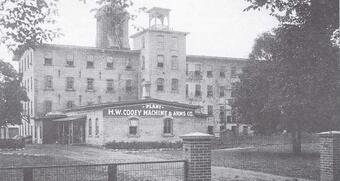
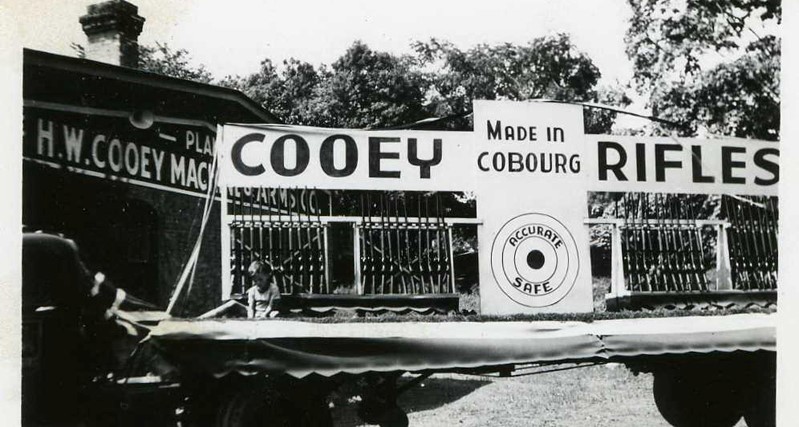
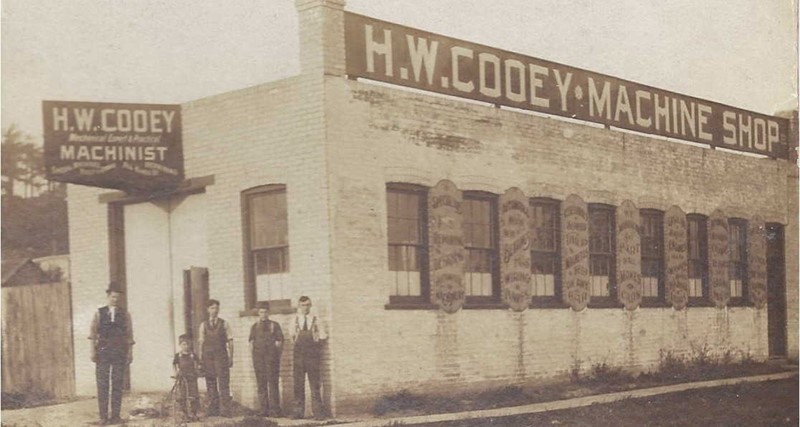
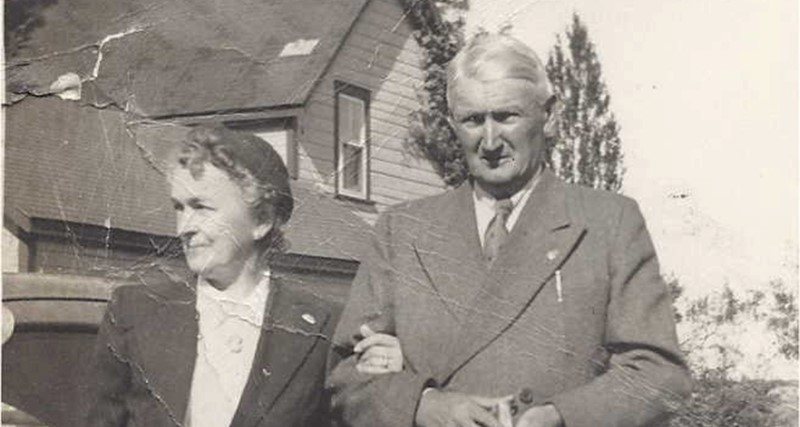
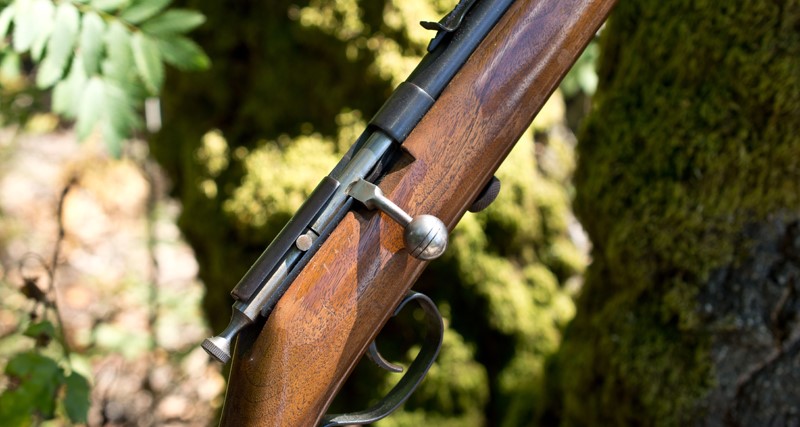
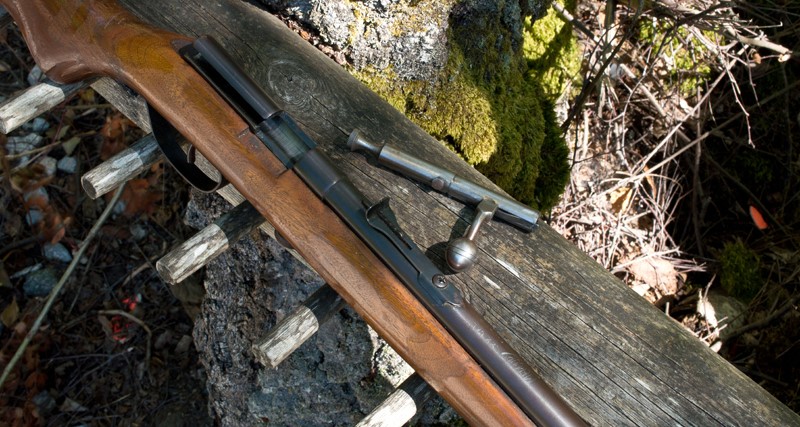
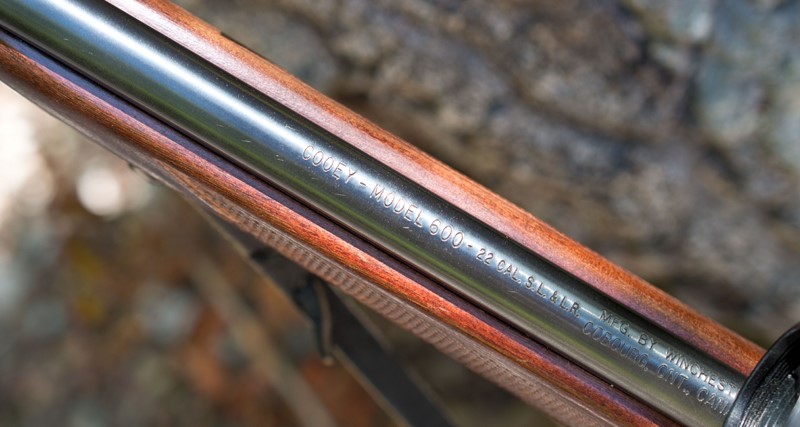
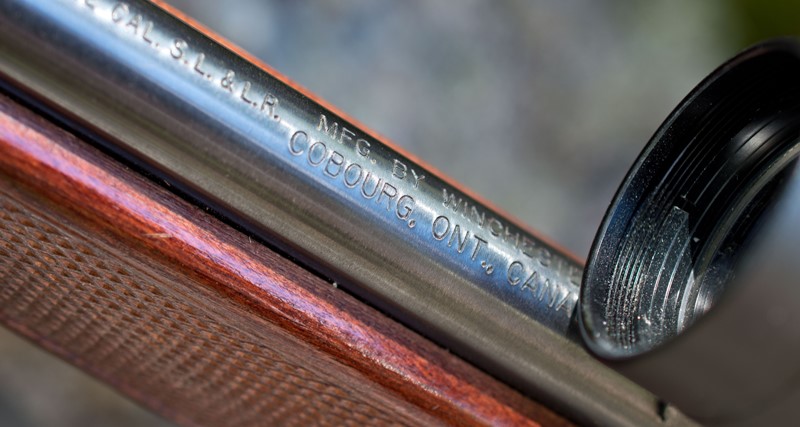
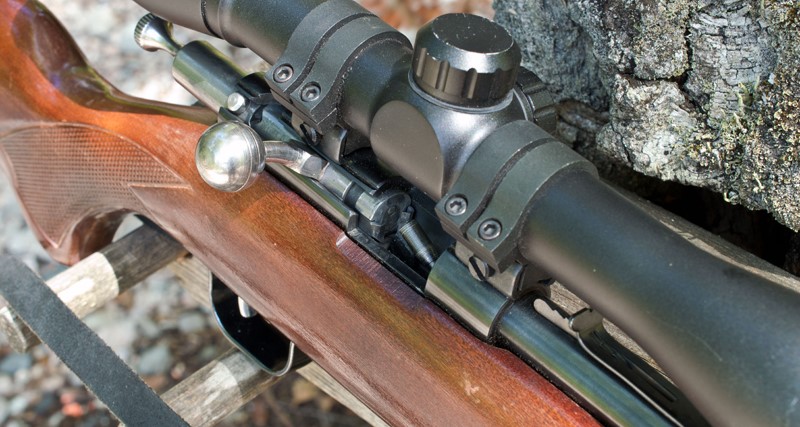
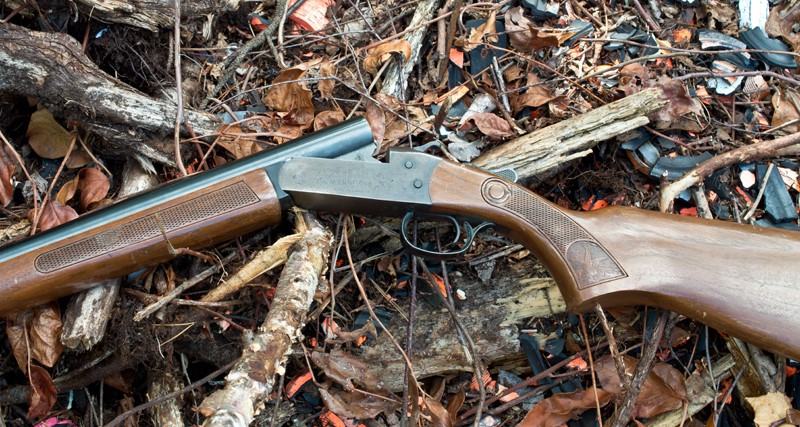

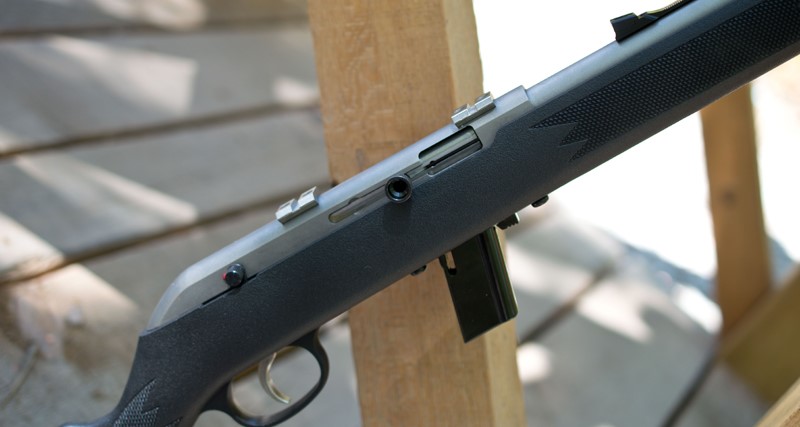
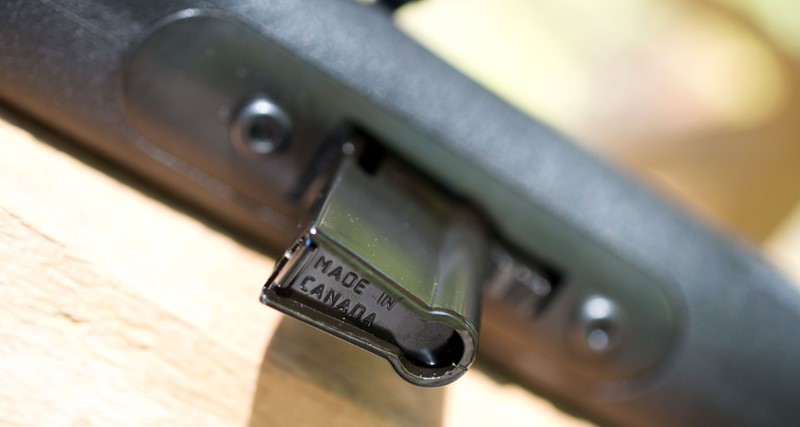
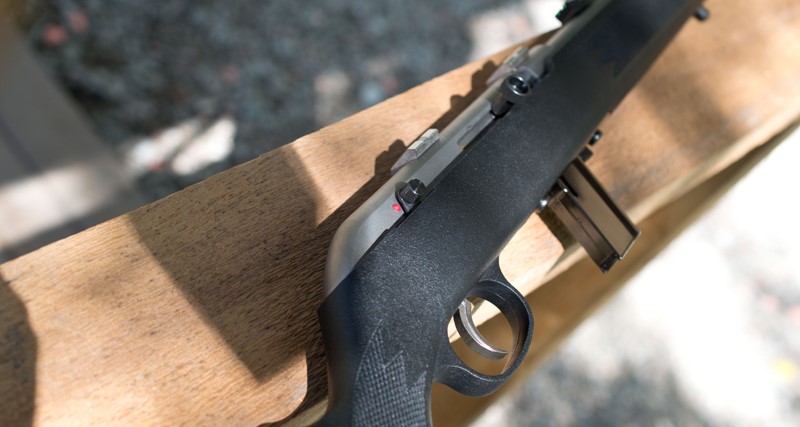
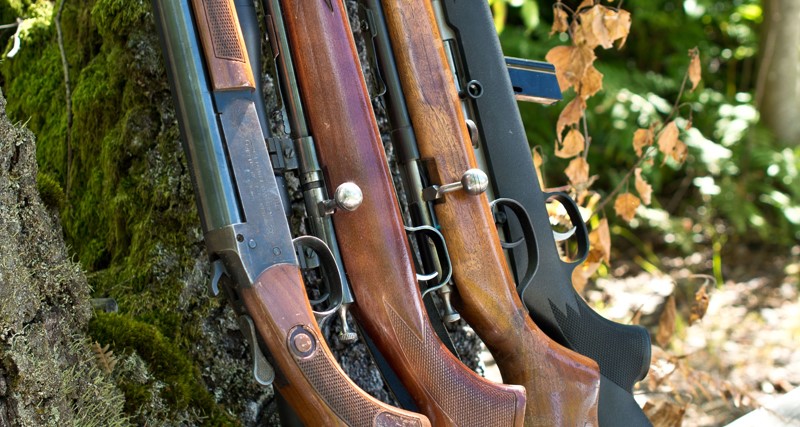


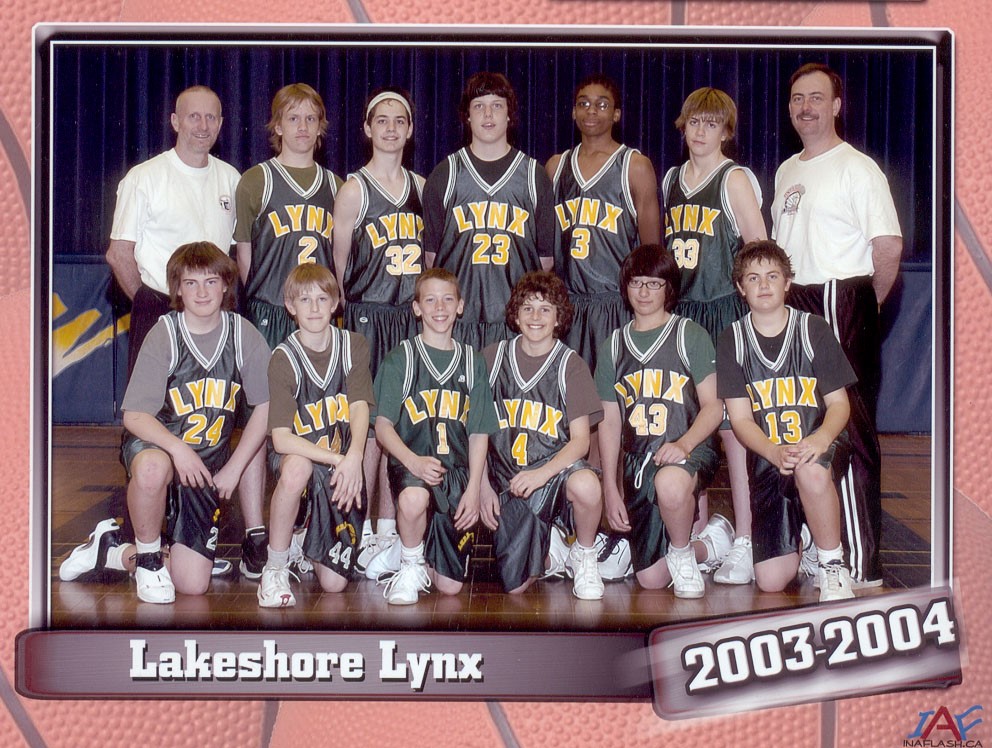

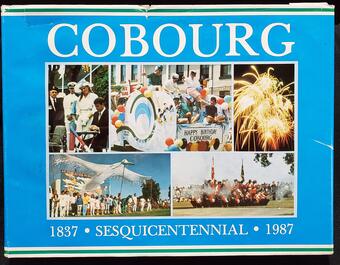
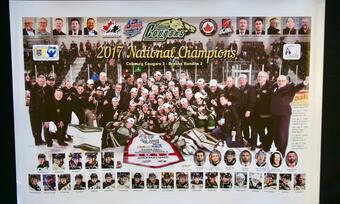

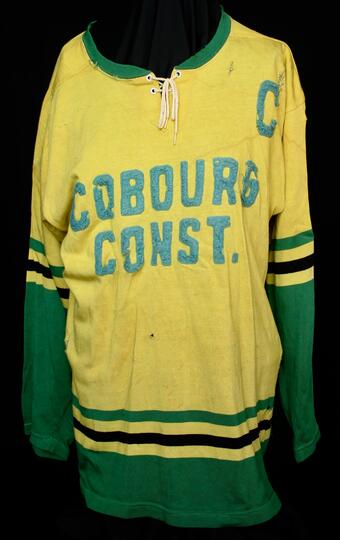
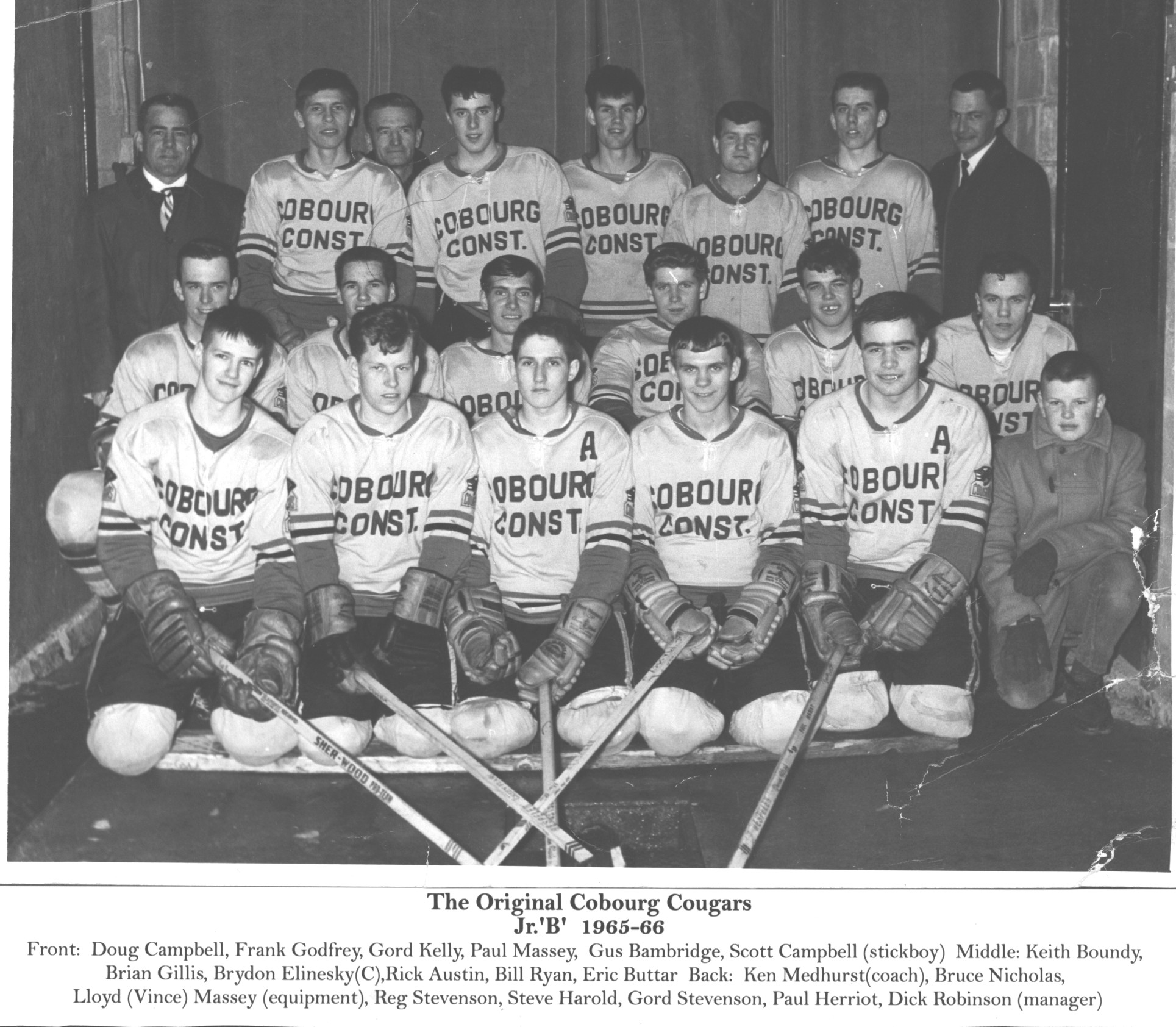
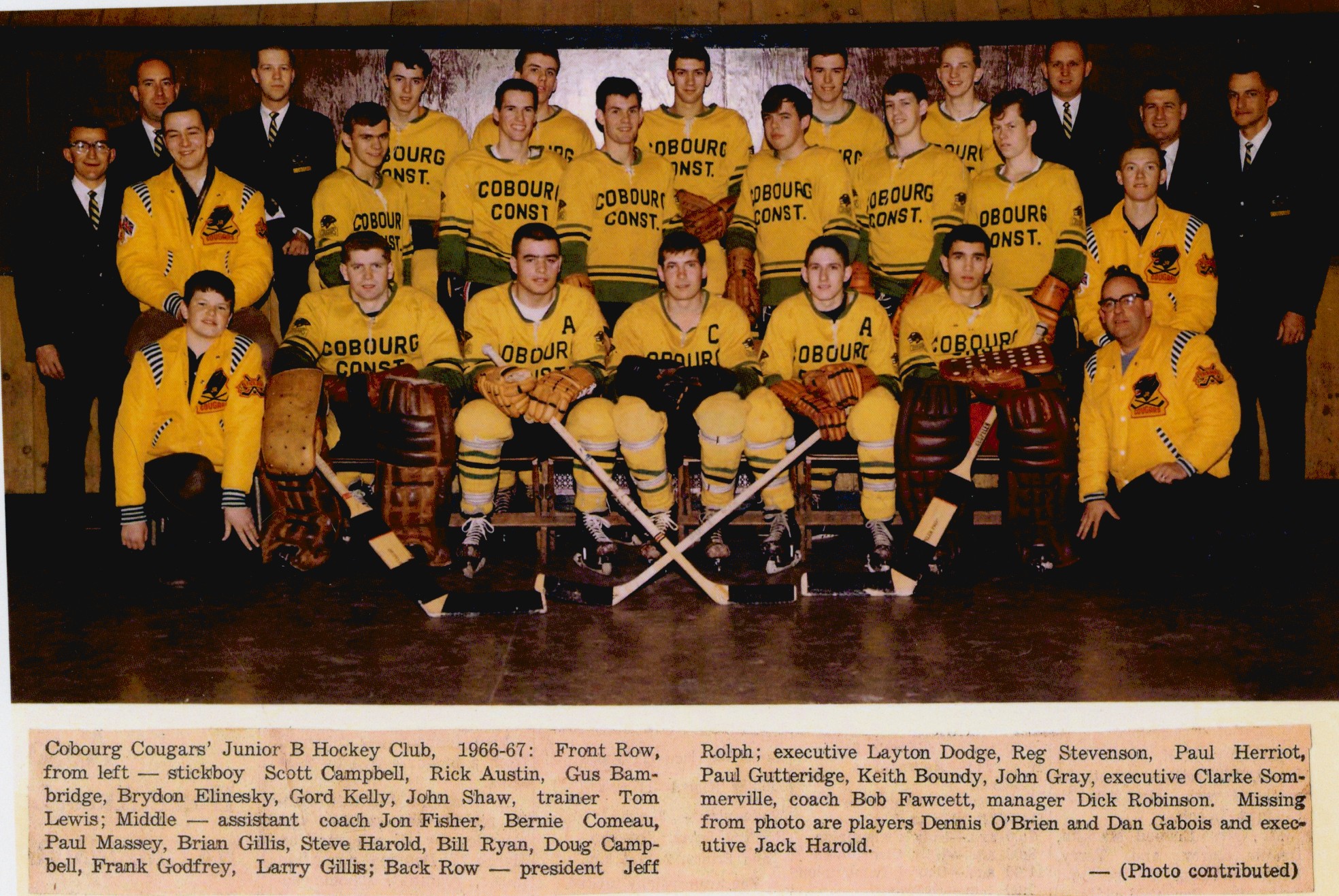
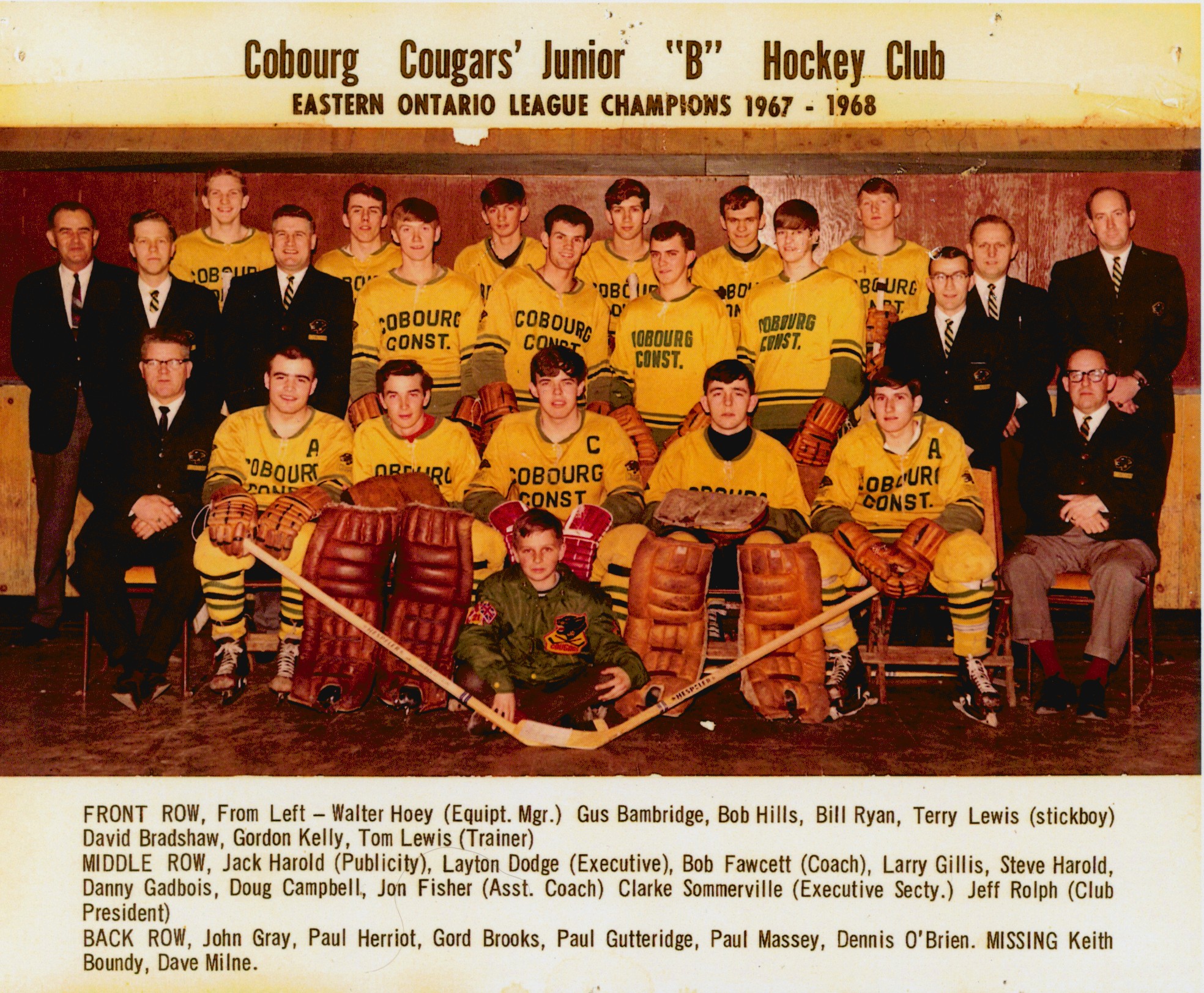
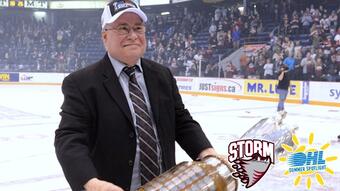
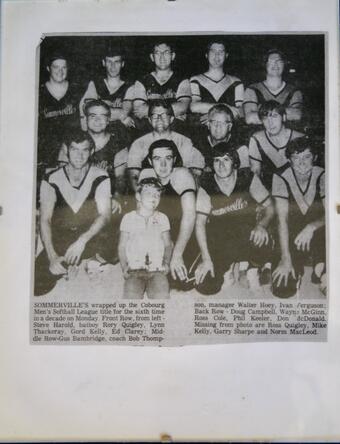
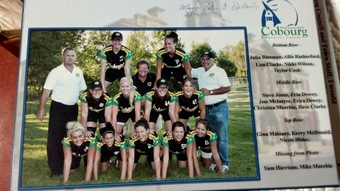
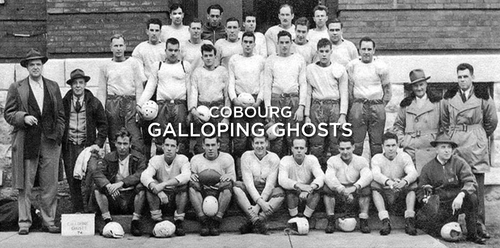

need parts
Hi there how are you. well im looking for parts for 12 Gauge-30 inch full choke. on the front holder when the hand grab the gun, thee is a braket that attach the pice to the gun I need tha braket and screws if you have them please my grand father has or had a collection of guns all from your company some to old to even read the writing in it I would like to re-store them i can send you pictures of them if you like to make sure I order the proper parts. I hope you can help thank you for your time and hope to heard from you soon Thank you again and have a great day Tony